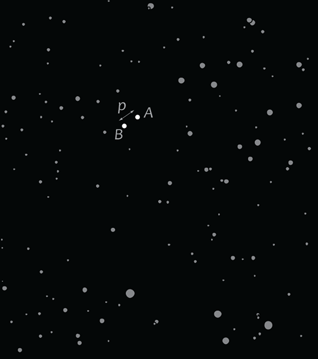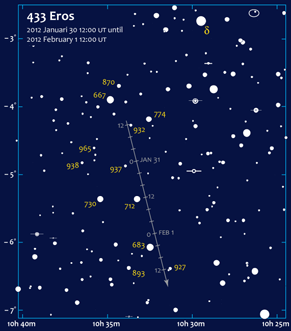From the invention of the telescope until interplanetary radar was developed in the 20th century, only two rare celestial events allowed astronomers to measure the size of our solar system. This fundamental data, critical to understanding the nature of even our closest neighbors in space, could only be measured with precision during the six times these events took place in the 18th, 19th and 20th centuries.
BOTH of these rare events take place in 2012. But you don't have to be a scientist, or travel the world, to observe them and take part in the measurements this time.
Scientific expeditions were sent around the world to observe and time the transits of Venus from different locations in 1761, 1769, 1874 and 1882. The oppositions of the asteroid Eros in 1901, 1931 -- when the minor planet comes closest to Earth -- gave scientists an opportunity for even more precise measurements. The repeat of both of these historically important phenomena taking place this year provides an unparalleled opportunity for a unique, global astronomy program.
Both measurements use parallax, the apparent difference in direction of an object as seen from different locations. The Eros opportunity comes first, in late January, and Astronomers Without Borders is collaborating with Steven van Roode in gathering photographs of the asteroid as it glides by Earth. Photographs of Eros submitted by amateur astronomers around the world will show slight differences in the asteroid's postion due to parallax. Along with each observer's location, this parallax information will be used to find a precise distance to Eros.


The Eros Parallax Project runs from January 28 to February 3. Each night participants will take an image of Eros, either through a telescope or with a telephoto lens, at designated times depending on your location. Then, using free, online software they will determine the celestial coordinates of Eros on their images and submit the data to Steven's website. Using the data submitted by all participants, the distance to Eros will be calculated.


The Eros Parallax Project is also a great educational opportunity -- the data and submitted images will be made available for classrooms to use to process the submitted figures themselves. This resource will last forever, and will certainly inspire some young astronomers to take part the next time Eros comes close to Earth again. It will also prepare classrooms for the even rarer event coming in June -- the transit of Venus. Along with enjoying the night sky, developing observing skills and gaining an understanding of our solar system, participants and the students who benefit will repeat the work of the professional astronomers of the 1930s and learn about real research.
For detailed instructions, more about the project's history and more see Steven van Roode's website at http://transitofvenus.nl/wp/getting-involved/eros-and-the-solar-parallax .







